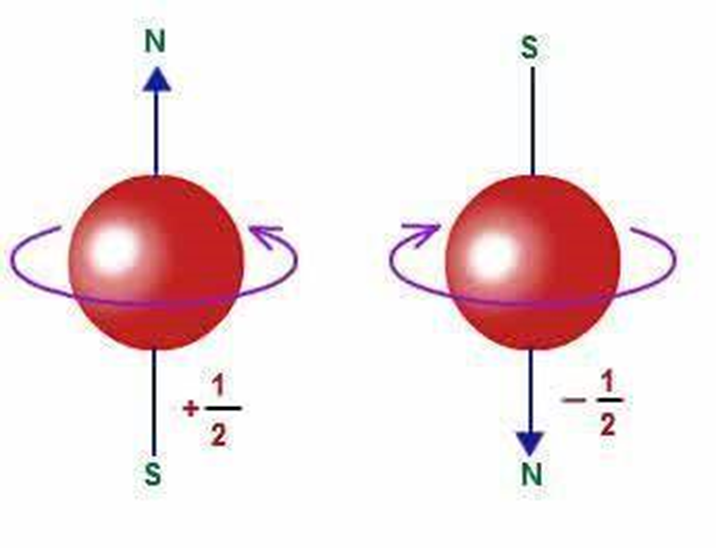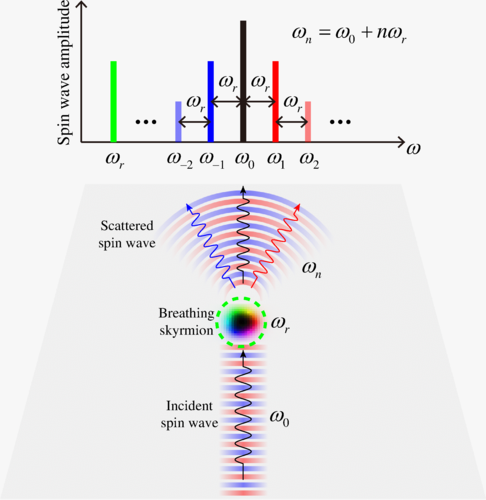
On March 10, the official website of ShanghaiTech University announced that the research group of Professor Lu Wei from the School of Physical Science and Technology of ShanghaiTech University has recently made important progress in the direction of photon-magnon interaction and strong coupling regulation. For the first time, the research team discovered a new type of magnetic resonance in ferromagnetic insulator single crystals, named pump-induced magnon mode (PIM). This discovery opens up a whole new dimension of research in magnetontronics and quantum magnetism.
The achievement was published in Physical Review Letters, a flagship journal in the field of physics.
The title of the paper is "Unveiling a Pump-Induced Magnon Mode via Its Strong Interaction with Walker Modes".
According to the above news, the discovery of Professor Lu Wei's team has broken through the category of "Walker modes" that has "monopolized" this field for more than 60 years , and discovered a new magneton state , which may be used in radar, communication, wireless information transmission, etc. field use.
new magneton state
In 1956, LR Walker, a staff member of Bell Telephone Laboratories in New Jersey, USA, wrote a paper, which gave a mathematical description of the space-limited magneton state of a magnetic block, and then published his paper. This magneton state is called Walker modes. In the following 60 years, almost all magneton states studied in bulk magnetic materials belong to the category of Walker modes.
Introduction to the review article "Topological States and Quantum Effects in Magnetronics" published in the Chinese academic journal "Acta Physica" in 2023 by Professor Yan Peng, School of Physics, University of Electronic Science and Technology of China, State Key Laboratory of Electronic Thin Films and Integrated Devices , the quantized spin waves are called magnons.
The spin wave is the collective excited state of spin precession in the magnetic system. It was first proposed by physicist Bloch (Bloch, winner of the Nobel Prize in Physics in 1952) in 1930 to explain The important law of the spontaneous magnetization of ferromagnets changing with temperature was subsequently confirmed by physicist Brockhouse (Brockhouse, winner of the Nobel Prize in Physics in 1994) using inelastic neutron scattering experiments in 1957.
The wavelength of spin wave can be as small as several nanometers, which can increase the storage density of information, and is beneficial to the miniaturization and high integration of magnetonic devices. Moreover, the transmission of spin waves does not involve the movement of electrons, and can propagate in both magnetic metals and magnetic insulators, avoiding the power loss due to Joule heat.
Each magnon carries a spin angular momentum reduced to Planck's constant, therefore, magnons can also carry and transfer spin information like electrons. The main purpose of magnetonics is to replace the information carrier with spin waves, and carry out information transmission and logic calculation through spin waves. Previous information carriers were the charge or spin properties of electrons.
According to the above news from ShanghaiTech University, the magneton state is the core concept in the application of electron spin, which is the collective excitation of spin in magnetic materials. The origin of macroscopic magnetism is mainly unpaired electrons in the material. Electrons have two well-known fundamental properties: charge and spin. The former is the object manipulated by all electronic devices. The spin, especially the spin in the magnetic insulator, can completely avoid the ohmic loss of conduction electrons, and give full play to the advantages of long life and low dissipation of the spin, so it is of great significance for the development of spintronic devices. Magnons can also interact with superconducting qubits, playing an important role in quantum information technology.
The latest published research found that under a low magnetic field, when a ferromagnetic insulator single crystal sphere is excited by strong microwaves, the internal unsaturated spins will obtain a certain degree of synergy, generating a spin wave that oscillates at the same frequency as the microwave excitation signal , the spin wave can be named as "pump-induced magnon mode (PIM)".
The photoinduced magneton state is like a "dark" state, which cannot be directly observed by traditional detection methods, but can be indirectly observed through the energy level splitting generated by its strong coupling with Walker modes, and can be regulated by excited microwaves.

Schematic illustration of an electron's spin: up spin (left) and down spin (right). From the article "Quantum Mechanics of Migratory Birds: Spin, Entanglement, and Geomagnetic Navigation".
According to the introduction of "electron spin" on the official website of the Institute of High Energy Physics, Chinese Academy of Sciences, the concept of spin was introduced out of the needs of quantum field theory. Not only electrons have spin, but all microscopic particles such as neutrons, protons, and photons have spin, but the value is different. Like physical quantities such as static mass and electric charge, spin is also a physical quantity that describes the inherent properties of microscopic particles. A particle with spin 0 is like a dot: it looks the same from any direction. A particle with spin 1 is like an arrow: it looks different from different directions.
Spin is different from rotation. According to the article "Quantum Mechanics of Migratory Birds: Spin, Entanglement and Geomagnetic Navigation" released by the WeChat public account of the Institute of High Energy Physics, Chinese Academy of Sciences, we cannot understand spin from a classical perspective. Current theories and experiments have not found the lower limit of the radius of electrons, so electrons are treated as point particles. According to the Pauli exclusion principle, two electrons cannot be in the same state, so the electrons around the nucleus are generally distributed in pairs, and an atomic orbital can accommodate two electrons, one with a spin up and one with a spin down. The spin orientations of these two electrons cannot be the same, and they are in a related state, which is what we usually call a quantum entangled state.
Excited state is used to describe the state in which electrons are excited to a higher energy level after atoms, molecules, etc. absorb energy. Thereafter, electrons may jump to a lower energy level in a short period of time, releasing a certain amount of energy, such as releasing photons, or returning to the ground state.
There is no electronic noise, which can be used for accurate radar detection
According to the above-mentioned news from Shanghai University of Science and Technology, the research and development of chips mainly follows Moore's Law, that is, the performance of chips will double every 18 months to two years. However, as human society gradually enters the post-Moore era, blindly reducing the chip manufacturing process has been "extremely challenged". The time for doubling the performance of the processor has been extended, and the development momentum of "Hurricane" has encountered a technical bottleneck. Driven by market demand, people urgently need the injection of "fresh blood" to activate the outlet of low power consumption, high integration, and high information density information processing carriers . The rapid development of spintronics and magnetontronics based on the development of magnetic materials provides a way to break through the above limitations.
The research team also found that the newly published light-induced magnon states are rich in nonlinearities that generate a kind of magnon frequency comb.

Frequency comb (top). Schematic diagram of the spin-wave frequency comb generated by nonlinear magnon-skyrmion scattering. From "Magnonic Frequency Comb through Nonlinear Magnon-Skyrmion Scattering".
Compared with frequency combs generated in microwave resonant circuits, this new frequency comb does not have electronic noise , so it is expected to realize ultra-low noise signal conversion in information technology.
"Conventional magneton strong coupling states rely on resonant cavities to build... We get rid of this dependence, and can generate magneton strong coupling states by adding microwave induction. Such open boundary coupling states are expected to be as effective as Lego sequence combination to obtain rich functionality." said Professor Lu Wei, the team leader.
Lu Wei said, "The frequency comb we discovered is in the microwave frequency band, which is the frequency band used by radar, communication, and wireless information transmission. It can be predicted that our frequency comb will definitely play a role in these fields."
Lu Wei explained that the frequency comb is like a vernier caliper, which can accurately measure the wind and grass on the frequency spectrum. The previously discovered optical frequency combs (optical frequency combs) have shown amazing precision in atomic clocks and ultra-sensitive detection.
The research work was jointly completed by ShanghaiTech University, Shanghai Institute of Technical Physics, Chinese Academy of Sciences, and Huazhong University of Science and Technology, with ShanghaiTech University as the first completion unit. The first author of the paper is Rao Jinwei, an assistant researcher at the School of Physics at ShanghaiTech University, and the corresponding authors are Professor Lu Wei at the School of Physics at ShanghaiTech University, Yao Bikuo, an associate researcher at the Shanghai Institute of Physics and Technology, Chinese Academy of Sciences, and Professor Yu Tao at Huazhong University of Science and Technology.
Paper link:
https://journals.aps.org/prl/abstract/10.1103/PhysRevLett.130.046705